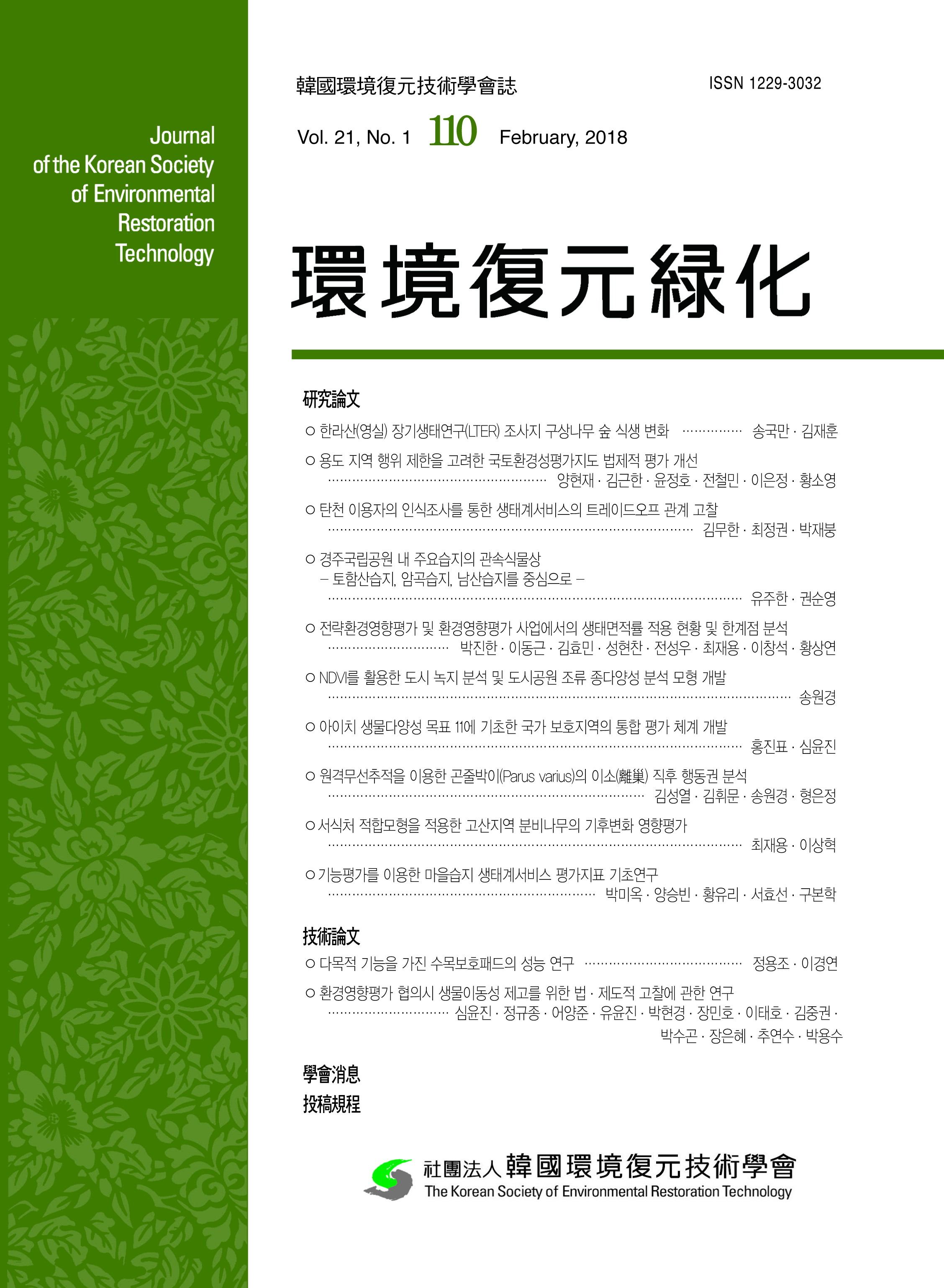Only the habitat characteristics and breeding status of Paridae have been studied, in addition to the lack of research on Parus varius varius, there is no study on the home-range in the post fledging period. This study was analyzed the home-range size of Parus varius varius in the post fledging period. The survey was conducted in the site located in Dankook Univ. Cheonan Campus(Middle Chungcheong Province). We captured five newborn Parus varius varius using artificial nest was installed before. Radio-tracking was carried out for analysis of home-range, and MCP (Minimum Convex Polygon) was used for analysis. We analyzed 1 individual tracked 15 days (VT5) and 4 individuals which missing radio-tracking transmitter within 3 days (VT1~VT4). Home-range of VT5 gradually increased to 1,38ha, 1.42ha, 2.14ha in the order of early, middle, late period. On the other hand, moving distance was decreased to 174.558m 125.129m, 120.180m. Home-range of V1~VT4 was estimated as 0.81ha which was 75.3% share of home-range of VT5 in early period. As the result it was found that home-range is formed far apart from artificial nest that has been influenced by human being interference, thereafter gradually adapting to interference and spreading close to artificial nest. through this research, we can construct basic ecological data for protecting habitat of Parus varius varius and increasing life rate. As first radio-tracking study of Parus varius varius home-range in the post fledging period, it is expected to be useful for the future study of home-range.




